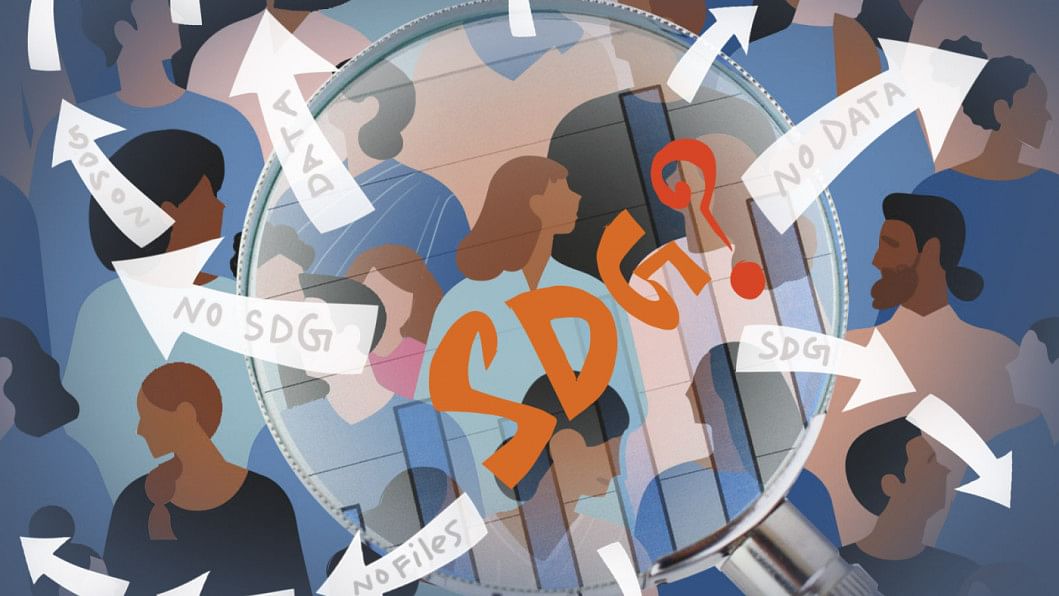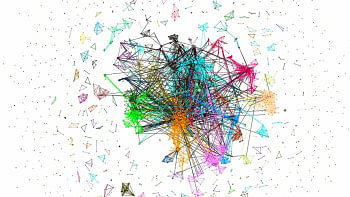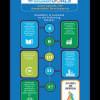How will we measure development if we don't have data?

To monitor the progress and success of the unfinished agenda in the Sustainable Development Goals (SDGs), it is necessary to improve the availability and quality of data on population and development. Understanding progress related to population requires that the latest, high-quality, accurate, and reliable information be available, disaggregated by factors such as income, gender, age, race, ethnicity, migratory status, disability, geographic location, and other relevant characteristics.
In Bangladesh, there is a lack of disaggregated population data for development. Almost one-third of all indicators (32.11 percent) to monitor the 17 SDGs are currently unavailable (out of 248 indicators), 31.3 percent of the indicators are in progress, and 37.4 percent are updated or readily available, according to the SDG tracker of the Bangladesh government. A few of the SDG goals are more critical in this regard. For example, Goal 12 (ensure sustainable consumption and production patterns), Goal 13 (take urgent action to combat climate change and its impacts), and Goal 14 (conserve and sustainably use the oceans, seas, and marine resources), which have more than 50 percent of indicators, have no data. More than 30 percent of indicators have no data for Goal 5 (achieve gender equality and empower all women and girls), Goal 10 (reduce inequality within and among countries), Goal 11 (make cities and human settlements inclusive, safe, and resilient), and Goal 15 (protect, restore and promote sustainable use of terrestrial ecosystems, sustainably manage forests, combat desertification, halt and reverse land degradation, and halt biodiversity loss).
For Goal 3 (ensure healthy lives and promote well-being for all at all ages), out of 28 indicators, 18 are updated (62.07 percent), whereas six are in progress (20.69 percent), and four have no data (13.79 percent). In the case of Goal 4 (ensure inclusive and equitable quality education and promote lifelong learning opportunities for all), out of 12 indicators, six are in progress (50 percent), and one has no data (8.33 percent). For Goal 6 (ensure availability and sustainable management of water and sanitation for all), 21.43 percent of the indicators have updated data, whereas 28.57 percent are in progress, and 28.57 percent have no data.
The primary population data sources to monitor population and development planning in Bangladesh are the Bangladesh Population and Housing Census, Bangladesh Sample Vital Statistics under the Bangladesh Bureau of Statistics (BBS), Labour Force Survey (LFS), Bangladesh Demographic and Health Survey (BDHS), Multiple Cluster Indicator Survey (MICS), Bangladesh Maternal and Healthcare Survey (BMHS), Bangladesh Urban Health Survey (BUHS), Violence Against Women (VAW) Survey, Household Income and Expenditure Survey (HIES), and others. None of these data sources are updated, except the preliminary report of the Sixth Population and Housing Census 2022. The post-enumeration check (PEC) of the census, which was conducted in June, is still in progress. The BBS has not conducted adequate studies on the impact of the Covid-19 pandemic on the population either. Most of the latest surveys on population and development are pretty outdated. For example, the last Child Labour Survey was done in 2013, VAW survey was in 2015, LFS in 2016-2017, and Sample Vital Statistics in 2020. As far as I know, the HIES 2022 is ongoing. We do not know how long it will take to see the final HIES report and when the complete data will be available to the researchers.
In Bangladesh, the quality of the available data does not always meet expectations, and data is not always made readily available to researchers. Moreover, considerable delays in releasing detailed analytical reports may disrupt the timely production of indicators and statistical information, as well as hamper evidence-based policymaking. Hence, improving data availability and quality is necessary in the country. A systematic assessment of the population and development planning database is needed. The government should work more intensively to support capacity-building to collect the administrative data used for SDG monitoring and reporting. Data authentication, conversion to official statistics, and setting targets every five years to measure improvement are needed.
For that, the government should encourage the UN agencies that concentrate many efforts on marginalised and vulnerable groups across the country. Some of the critical challenges in monitoring SDG progress and national policies include: (i) lack of disaggregated data by age, sex, disability, and at the subnational level; (ii) conceptual, definitional, and methodological challenges concerning international homogeneity; (iii)) lack of technical support for regular monitoring; (v) difficulty in data collection and immediate dissemination; and (vi) lack of funding from different sources, i.e. private sector, public sector, public-private partnership, NGOs, and external financing.
We are just seven years away from the SDG deadline. It is urgent now to improve data availability and quality for population and development planning. Following the principle that no one should be left behind in the 2030 development agenda, various UN agencies can accelerate their efforts across the country. Once we get the latest information on the status of population and development indicators, it will be possible to explore how they are linked to SDG monitoring and what needs to be done to strengthen said monitoring, and what factors might assist this strengthening process. Realistically, planning is difficult without a solid database and a body of researchers who utilise and assess said database.
Dr Mohammad Mainul Islam is a professor and former chairman of the Department of Population Sciences at Dhaka University.


 For all latest news, follow The Daily Star's Google News channel.
For all latest news, follow The Daily Star's Google News channel. 











Comments